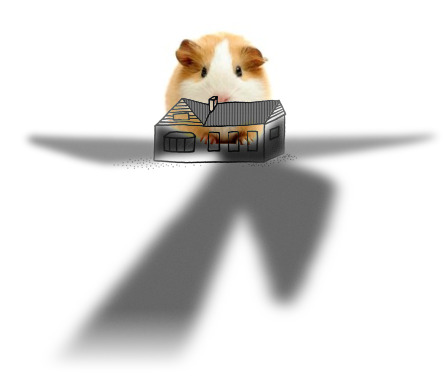Is press coverage of wind turbine noise merely “annoying”? (Editorial)
Mar 11, 2011
Editor’s introduction: Guest Editor, Eric Bibler, wrote the following in response to an article by NPR’s Heather Goldstone, PhD, titled “Is Annoyance a Health Impact?“
Before reading Bibler’s rebuttal, be sure to watch the PBS interview with Goldstone and NPR reporter Sean Corcoran regarding their coverage of Wind Turbine Syndrome in Falmouth, Massachusetts (Cape Cod).
·

Heather Goldstone, PhD
Is Press Coverage of Wind Turbine Noise Merely Annoying? Or Does It Allow Wind Energy Developers to Evade Their Responsibility for Imposing Profound Adverse Health Impacts on Innocent Neighbors?
—Eric Bibler, WTS.com Guest Editor
·
First, I would like to thank Sean Corcoran and Heather Goldstone for all of the time and effort that they have spent reporting the devastating impacts to residents of the Falmouth (Massachusetts) wind turbine and, to a lesser extent, the adverse impacts of wind energy installations worldwide.
This is a difficult and complicated subject and it is critical that residents of Cape Cod, Massachusetts and other locations around the world understand the implications of government-backed efforts to install new industrial wind energy facilities on a massive scale.
Nonetheless, after having listened to the recent interview with Mr. Corcoran and Ms. Goldstone on PBS, and having reviewed this article contributed by Ms. Goldstone (and countless others in the NY Times, the Washington Post, the WSJ, et al), I continue to be extremely troubled by the inability, or the reluctance — in any event the repeated failure — of the Press to state, unequivocally, some obvious aspects of industrial wind energy.
All too often, we find that reporters, no matter how well-meaning, are prone to discussing the relevant issues within a framework proposed by the wind industry — rather than bringing their full professional skepticism to bear on this topic and seeking to frame the debate in terms that are independent of the public relations talking points used by the American Wind Energy Association and the developers.
So, for example, we have here an entire article that is offered under a headline that completely misses the point: “Is Annoyance a Health Impact?”
The truth is that the question of whether the adverse impacts from wind turbines constitute mere “annoyance” or a “bona fide health impact” is not open to question at all. Once the impacts from wind turbines are properly understood, and considered — and once one experiences the endless repetition of this “talking point” from AWEA’s website reverberating through the cookie cutter presentations of every wind energy proposal — it becomes obvious how transparently deceitful it is even to pose this question.

See “What do you say when you find him hanging on the turbine fence
with a [self-inflicted] .357 round in his head?”
Consider the following:
(1) In literally thousands of cases around the world — as reported in every form of traditional media, in first person testimonials, in court cases and public hearings, and in clinical medical studies — residents living near industrial wind turbines have reported the same symptoms, including: sleep deprivation, headaches, tinnitus (ringing in the ears), fluctuating pressure in the ears, increased blood pressure, anxiety and depression.
I repeat: thousands.
(2) The onset of all of the above symptoms is reported to coincide with the operation of wind turbines — and to cease when the same stimulus is removed (either by turning them off or by virtue of the resident fleeing the impacted area).
(3) All of the above symptoms are considered by the World Health Organization to be bona fide health impacts, in and of themselves, or to be conditions whose persistence constitutes a direct threat to good health (as, for example, prolonged sleep deprivation is well known to have direct, and very adverse, impacts upon human health).
In other words: (a) we know that wind turbines cause the symptoms; and (b) we know that the symptoms constitute a serious threat to human health.
I repeat: both of these aspects are proven — not debatable, not open to question.

See “McCunney wins WTS.com Rubber Duck Award 2010“
AWEA — and Dr. McCunney — seek to bamboozle the press by blurring the issue and insisting, as always, that “more research is needed” or that the impacts are “not well understood.” Regrettably, more often than not, they succeed.
Yes, more research is needed — but not for the reasons that Dr. McCunney and AWEA imply.

Robert J. McCunney, MD
We absolutely do not need more research to establish an extremely high risk of substantial harm.
We do need more research to understand all of the factors that produce the harm — the various damaging components of wind turbine noise (aerodynamic amplitude modulation; low frequency and sub-audible infrasound; sheer repetitiveness) and the various environmental conditions that exacerbate it (topography; wind direction; wind shear; turbulence; seasonal effects; humidity; temperature; ambient noise; to name a few).
We need more research to understand the transmission mechanism, both at the point of origin (i.e. the 400 and 500 foot machines that emit noise at over 100 dB) and at the “receptors” — the human beings who are tormented by the noise and vibration.
Yes, it’s true that the idea of populating our residential neighborhoods and our conservation areas with gigantic, vertical, kinetic industrial plants with 14,000 lb blades spinning at up to 180 mph is a new one (and not a particularly bright idea, as it turns out).
Yes, it’s true that, because the character of this new industrial noise is so idiosyncratic — so rhythmic and so intense, and broadcast over such a vast expanse from such a prodigious height above the ground into the open air — that established noise models are completely incapable of properly evaluating it.
Yes, it’s true, since the advent of this grossly irresponsible, large-scale, real time experiment in creating human misery from industrial noise is so recent, that we haven’t had time to study all of the human guinea pigs — thousands of them — whom we have bombarded with this stimulus in order to methodically chart all of the variables in this insanely complex equation involving noise and human physiology.
And, yes, it’s true that the physiology of the human ear is so complex — and the nature of the industrial noise from wind turbines so unnatural and unique to our experience — that we don’t fully understand which organs, or combination of organs and bodily systems, react to this relentless stimulus, or in which combinations, in order to make people sick or profoundly disrupt their lives.
But it is not necessary to interview all of the unfortunate (and unwilling) human guinea pigs; to chronicle and tabulate all of their symptoms and cross-reference them with plotted distances to the nearest wind turbine; to understand precisely which of the intricate mechanisms deep within our ears translates the wind turbine noise into unremitting torture for the human “receptors”—to understand that industrial wind turbines very often, almost inevitably, impose profound, and persisting, adverse health impacts upon their neighbors.
Nor is it necessary — in light of the thousands of consistent reports and the gravity of the symptoms — to “peer review” the tabulated results from interviewing all of the unwilling subjects in this giant, industrial scale experiment in installing open-air industrial plants in residential areas.
Wind turbines degrade the environment — since many species of wildlife are even more sensitive to such intrusions of chronic noise than humans; they degrade the quality of life, to the point of imposing intolerable disturbance and persistent intrusions; and, not surprisingly, in view of the foregoing, they have a profound adverse impact on property values — which, at the end of the day, are nothing more than a reflection of the desirability of living in any particular place.
So please — please — do not ever allow the wind energy enthusiasts to engage you — our independent eyes and ears — in a debate over whether the adverse impacts wind turbines constitute a bona fide “health risk” or “mere annoyance”!
Anyone with common sense can see that this is a simple and deceitful sleight-of-hand on the part of AWEA and other lobbyists — and the wrong question to ask.
·

Eric Bibler, WTS.com Guest Editor
(Yes, the glasses are real.)



Comment by 44Guyton on 03/12/2011 at 3:40 pm
A close examination of the wind turbine issue reveals they are NOT green, they are NOT sustainable, they do NOT create jos, they will NOT reduce our dependence on foreign oil, and they have a negative impact on human health and wildlife.
Without huge government subsides, this technology would fail in the FREE market.
Look at the science Energypresentation.org